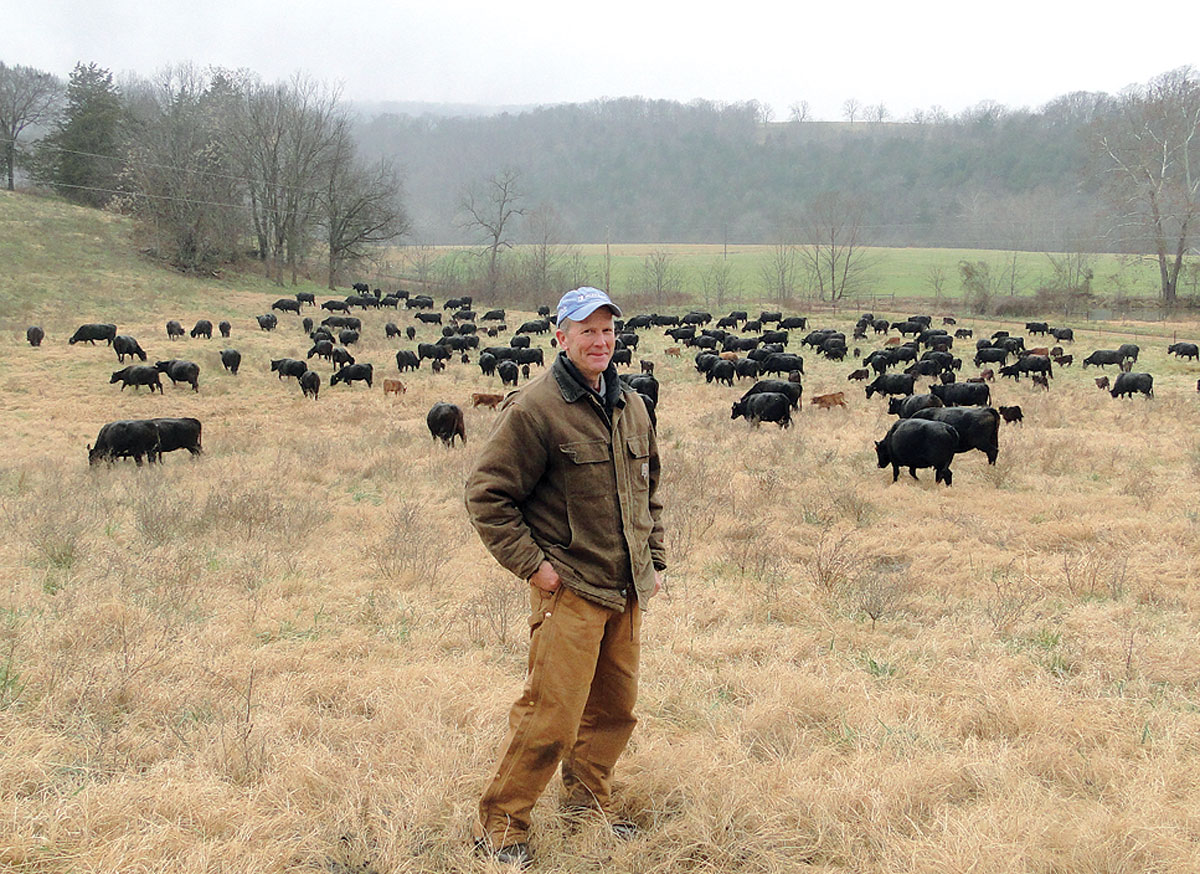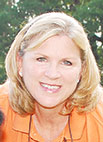
Brent Fry has transitioned his family’s farm into a diverse operation
Brent Fry’s grandparents, Aubren and Marie Fry, purchased 60 acres in rural Green Forest, Ark., in 1950 with Brent and his wife Jennifer now living in the old homestead. Osage Creek Farms now encompasses 1,640 acres and is home to 260 head of momma cows, three turkey houses and goats.
Brent’s father Larry left home to join the Navy and returned to farm with his wife Suellen and children, Debbie and Brent. Now Brent and Jennifer’s son Drew and his wife Kaley are planning to leave Seattle and Drew’s mechanical engineering position to return and farm, prompting the purchase of 600 acres last year from a contiguous farm.
Brent remembers being a youngster when gathering cattle from a 600-acre pasture was a week-long adventure. His job was to stay with the cattle that bolted into the trees. He’d run and keep them in sight until his dad and grandfather finished gathering for the day and came back for the strays, often after dark.
“Today I can round up the herd in 30 minutes using four wheelers,” Brent said with a laugh.
The hub of the Fry operation is a rotational grazing system. In 2002, Brent spent 15 percent of his gross income paying someone to roll 900 bales of hay, a percentage that didn’t work for him and buying his own haying equipment was too expensive. Since he had covered storage space, he bought and still buys his hay when prices are low. He stockpiles hay even if that means keeping it for more than a year.
“If I could’ve afforded equipment, I’d probably still be haying. Then came the drought of 2012, and I needed to find an alternative method,” said Brent.
The answer came in the form of daily allotment strip grazing. He attended a pasture walk sponsored by the Grass Roots Grazing Group. Now his pastures are divided into paddocks with the paddocks divided by temporary fencing into daily allotment sizes. The cattle are moved to a fresh strip each day. Though the herd may stay within one paddock for a number of days, each day provides fresh, manure-free forage. Further, each strip has plenty of time to recover as the cattle move through the paddocks within the pastures of the daily allotment system.
In addition to the obvious advantage of daily fresh grasses, the system encourages the growth of native grasses which, according to Brent, add a depth to the flavor profile of the grass finished beef produced.
“God didn’t create a monoculture, and this system promotes native grass expansion thereby naturally providing warm and cool weather grasses. It’s like going to Western Sizzlen and getting the whole buffet instead of one or two items. In a good year, I may need very little or no hay at all but I have my stockpile to fall back on when needed,” Brent said.
Brent is now improving the 600 acres he purchased in anticipation of his son’s return. The goal is shade and water within 800 feet for each daily rotation. Pasture and paddock size will vary greatly, as they do on the rest of Brent’s land as a result of topographical challenges like ravines and cliffs, and soil health. Water is pumped half way to high point storage tanks and then moved the rest of the way by solar lift where gravity feed supplies the water through pipes connected to the various stations.
Brent’s land management system has direct impact on genetics and marketing. His commercial, Angus-based females are bred by Angus-based bulls with the goal being fall calves. Cows are naturally bred in a 45-day window. However, heifers are bred first using AI and cleanup bulls in a 30-day window. Those heifers that don’t breed are sent to a much smaller spring calving “retirement” herd. If a heifer doesn’t breed the second time, she is “retired.”
“I put a lot of pressure on my heifers because they are only grass fed, that is with no grain at all, which is true for our mommas and grass-finished steers,” Brent said. “If I grained the momma cows, I could approach a 100 percent pregnancy rate, but I want to retain only those who thrive on forage which increases the productivity of my rotational grazing system.
“When I was a pup, it was go big or go home. Now small scale operations are possible because some consumers are more aware and particular.”
Daughter Aubree Hays and her husband Kelton manage marketing the USDA-processed beef through the Fayetteville Farmers Market and directly to customers through their website and webpage. Other products, include goat meat from goats that browse overgrown areas.
One-third of the Fry income comes from three turkey houses. These houses are called a brooder hub which means all three houses are filled with Butterball poults at the same time. The poults arrive in 100 bird totes with 20,000 in each house. The system is similar to a broiler house in the chicken industry because the young birds are sent on to a finishing farm after five weeks. The turkey houses then sit empty for four weeks before being filled with more poults.
When Brent switched to this model, stress was high. His son in college in Texas was supposed to help but called and said he would have to be a day late. Stress and exhaustion were high for Brent, his daughter and then future son-in-law Kelton, as well as ranch hand Autie Robbins and his daughter Jontel. Then Drew walked through the door to help after driving all night because he knew he was needed.
“I was never so proud,“ Brent said. “He walked in and put wind in all our sails. This farm wouldn’t work without God’s help and the dependability and work ethic of the best ranch hands around: Tony Fultz, Autie Robbins and Aurther Clark.”






